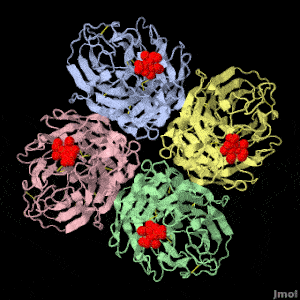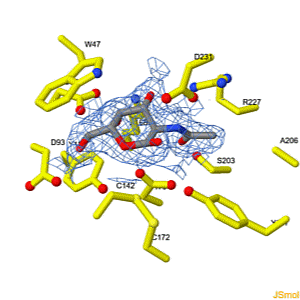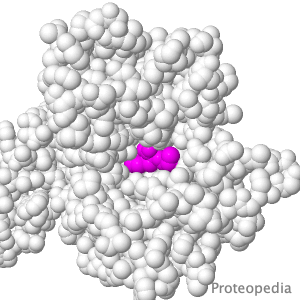Main Page
From Proteopedia
| Line 20: | Line 20: | ||
<tr style="font-size: 1.2em; text-align: center;"> | <tr style="font-size: 1.2em; text-align: center;"> | ||
| - | <td style="padding: 10px;background-color: #33ff7b">[[:Category:Featured in | + | <td style="padding: 10px;background-color: #33ff7b">[[:Category:Featured in Selected Pages|Other Selected Pages]]</td> |
| - | <td style="padding: 10px;background-color: #dae4d9">[[:Category:Featured in | + | <td style="padding: 10px;background-color: #dae4d9">[[:Category:Featured in Art|Featured in Art]]</td> |
| - | <td style="padding: 10px;background-color: #f1b840">[[:Category:Featured in | + | <td style="padding: 10px;background-color: #f1b840">[[:Category:Featured in I3DC|Featured in I3DC]]</td> |
| - | <td style="padding: 10px;background-color: #79baff">[[:Category:Featured in Education| | + | <td style="padding: 10px;background-color: #79baff">[[:Category:Featured in Education|Featured in Education]]</td> |
</tr> | </tr> | ||
Revision as of 14:44, 18 October 2018
|
Because life has more than 2D, Proteopedia helps to understand relationships between structure and function. Proteopedia is a free, collaborative 3D-encyclopedia of proteins & other molecules. ISSN 2310-6301 | |||||||||||
| Selected Pages | Art on Science | Journals | Education | ||||||||
|---|---|---|---|---|---|---|---|---|---|---|---|
|
|
|
|
||||||||
| Other Selected Pages | Featured in Art | Featured in I3DC | Featured in Education | ||||||||
|
How to author pages and contribute to Proteopedia Who knows ... |
How to get an Interactive 3D Complement for your paper |
Teaching Strategies Using Proteopedia |
|||||||||
| |||||||||||





